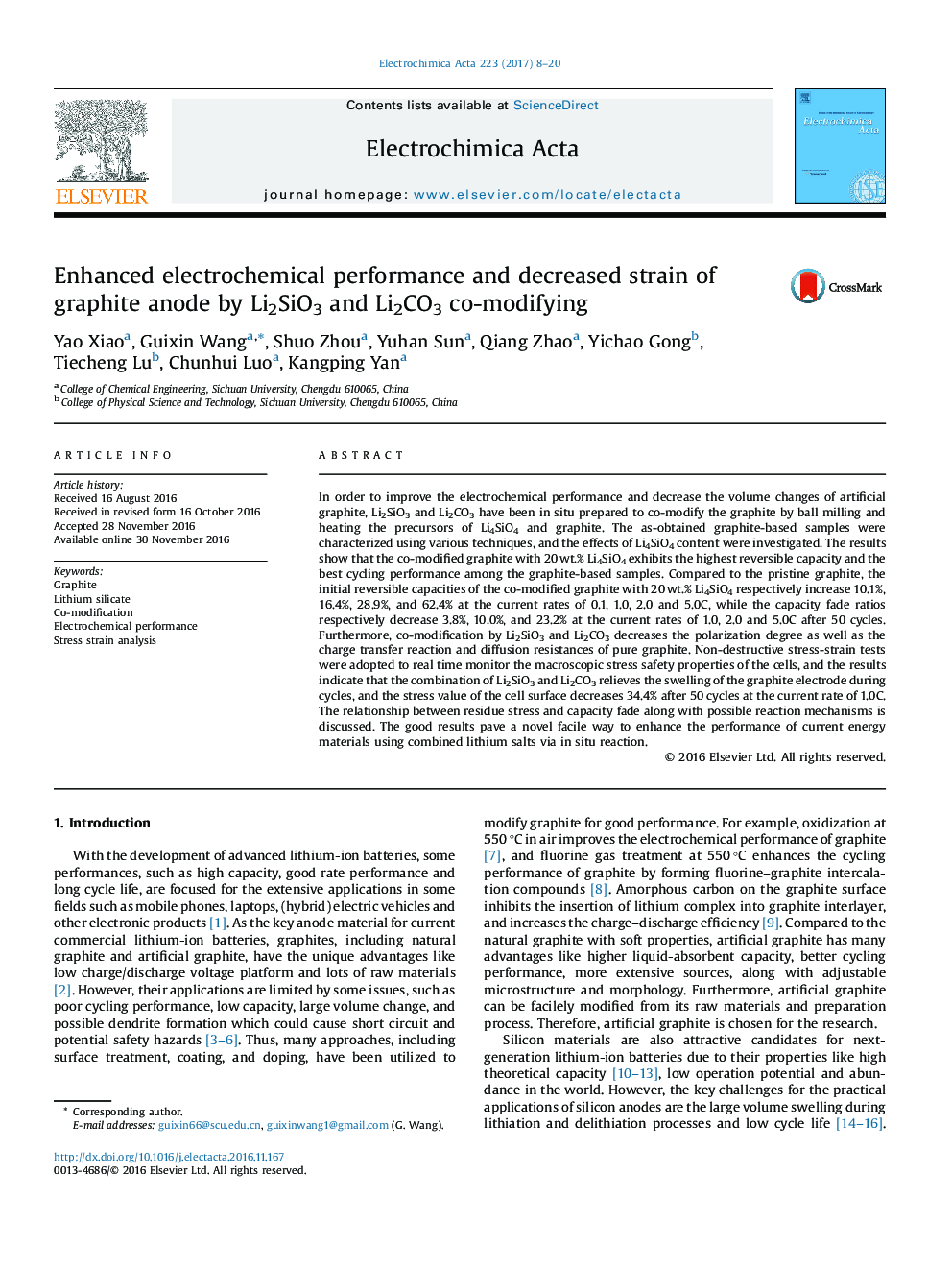| Article ID | Journal | Published Year | Pages | File Type |
|---|---|---|---|---|
| 4767492 | Electrochimica Acta | 2017 | 13 Pages |
Abstract
In order to improve the electrochemical performance and decrease the volume changes of artificial graphite, Li2SiO3 and Li2CO3 have been in situ prepared to co-modify the graphite by ball milling and heating the precursors of Li4SiO4 and graphite. The as-obtained graphite-based samples were characterized using various techniques, and the effects of Li4SiO4 content were investigated. The results show that the co-modified graphite with 20Â wt.% Li4SiO4 exhibits the highest reversible capacity and the best cycling performance among the graphite-based samples. Compared to the pristine graphite, the initial reversible capacities of the co-modified graphite with 20Â wt.% Li4SiO4 respectively increase 10.1%, 16.4%, 28.9%, and 62.4% at the current rates of 0.1, 1.0, 2.0 and 5.0C, while the capacity fade ratios respectively decrease 3.8%, 10.0%, and 23.2% at the current rates of 1.0, 2.0 and 5.0C after 50 cycles. Furthermore, co-modification by Li2SiO3 and Li2CO3 decreases the polarization degree as well as the charge transfer reaction and diffusion resistances of pure graphite. Non-destructive stress-strain tests were adopted to real time monitor the macroscopic stress safety properties of the cells, and the results indicate that the combination of Li2SiO3 and Li2CO3 relieves the swelling of the graphite electrode during cycles, and the stress value of the cell surface decreases 34.4% after 50 cycles at the current rate of 1.0C. The relationship between residue stress and capacity fade along with possible reaction mechanisms is discussed. The good results pave a novel facile way to enhance the performance of current energy materials using combined lithium salts via in situ reaction.
Related Topics
Physical Sciences and Engineering
Chemical Engineering
Chemical Engineering (General)
Authors
Yao Xiao, Guixin Wang, Shuo Zhou, Yuhan Sun, Qiang Zhao, Yichao Gong, Tiecheng Lu, Chunhui Luo, Kangping Yan,
